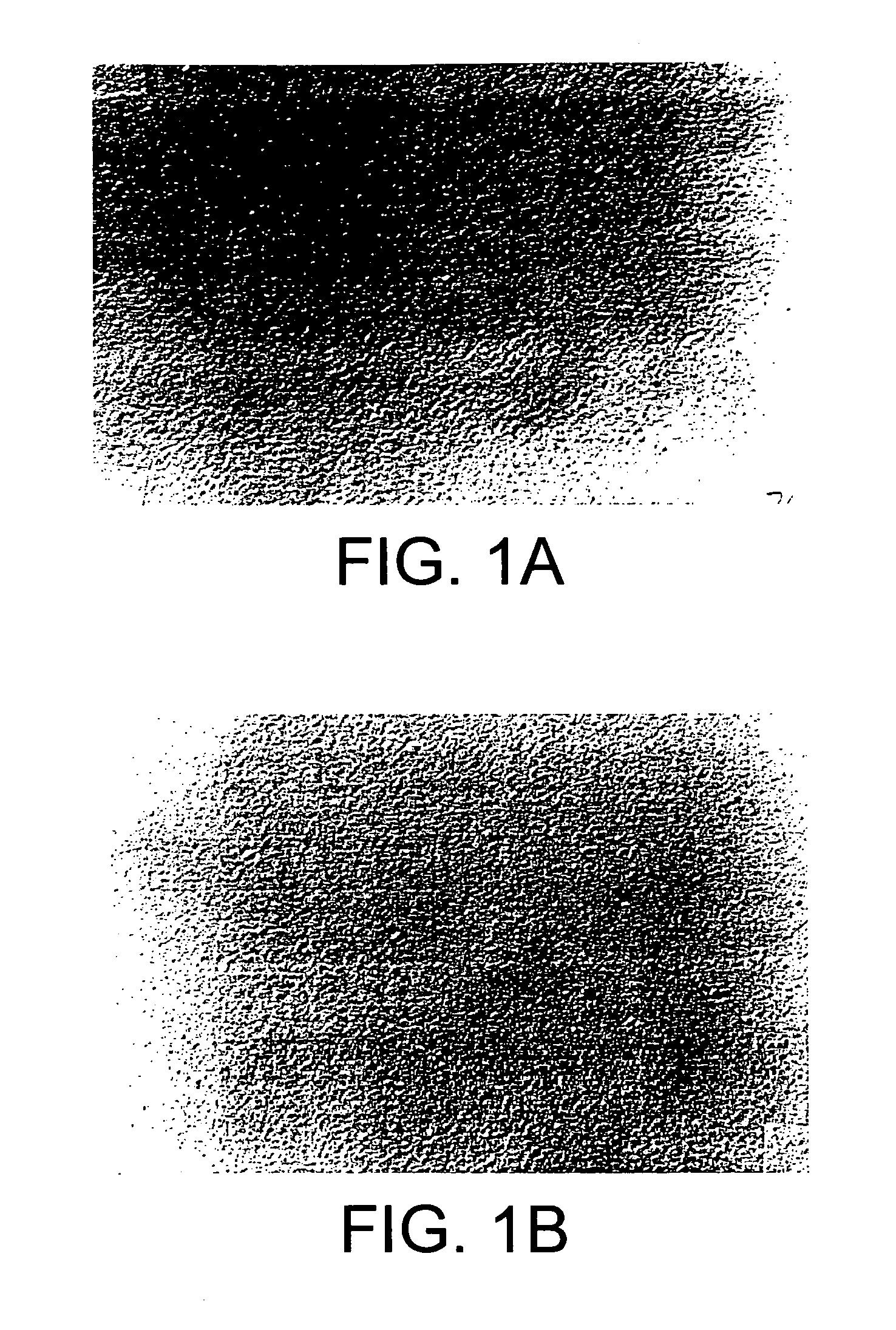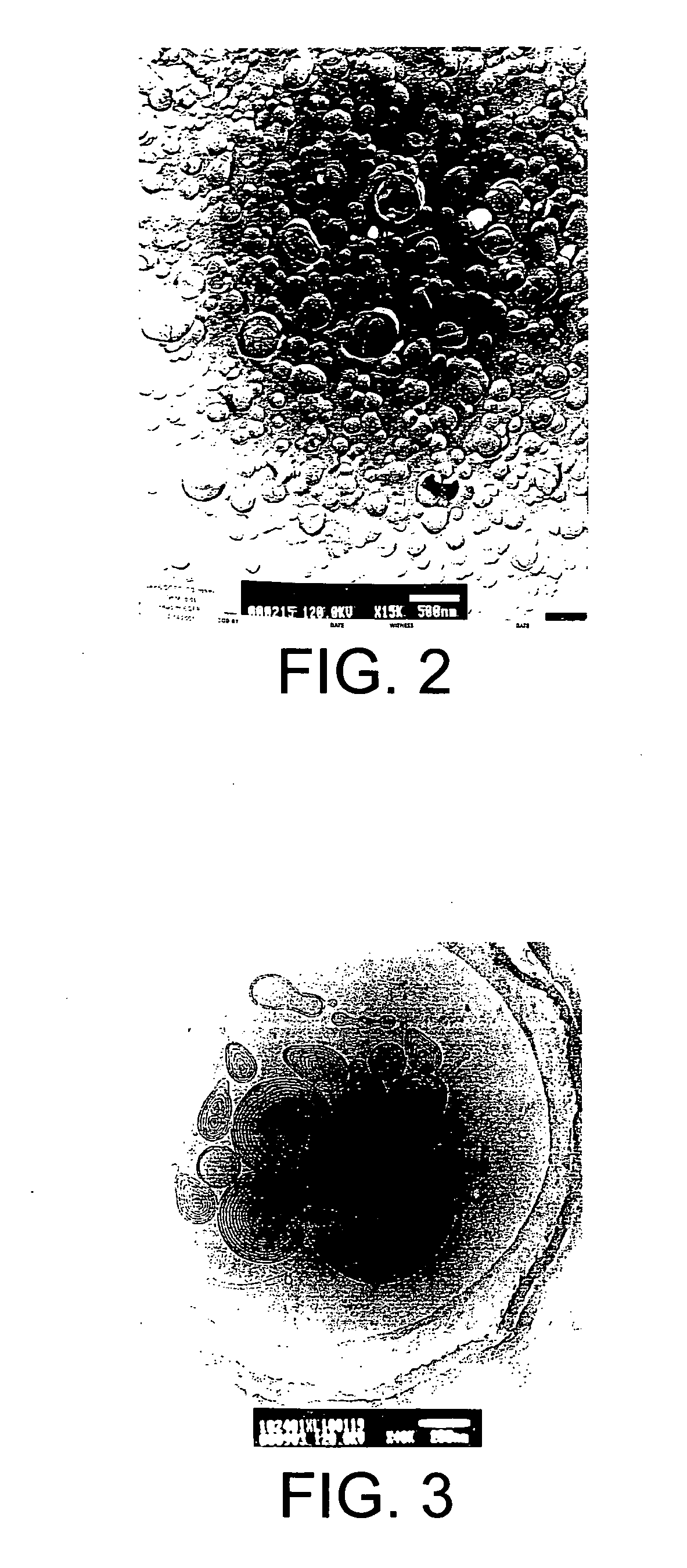Efficient nucleic acid encapsulation into medium sized liposomes
a nucleic acid encapsulation and liposome technology, applied in the field of liposome preparation, can solve the problems of lack of targeting mechanism, potential risk of virus reversion to replication-competent state, and introduction of tumorigenic mutations
- Summary
- Abstract
- Description
- Claims
- Application Information
AI Technical Summary
Benefits of technology
Problems solved by technology
Method used
Image
Examples
example 1
N-C12-DOPE / DOPC Liposome Preparation by Ethanol Gel Hydration
[0112] Typically, 36.7 mg of N-C12-DOPE and 14.2 mg of DOPC were co-dissolved in 100 μl ethanol. A volume of 100-200 μl of an aqueous solution containing a biological active substance was injected into the lipid ethanol solution under intense mixing. Then 1.8 ml of a hydration buffer (300 mM sucrose, 10 mM Tris, 1 mM NaCl, pH 7.0) was slowly added to the sample to form a suspension of liposomes. Any unencapsulated material was removed by washing (one wash consisted of (1) sedimenting the liposomes in an aqueous phase, (2) replacing the supernatant with fresh aqueous phase, and (3) resuspending the pellet) the liposomes three times via 10,000 g centrifugation.
[0113] If the nucleic acid to be encapsulated was a EGFP plasmid DNA or PGL-3 plasmid, and the liposome-forming lipid to be used was a mixture of N-C12-DOPE / DOPC (in a molar ratio of 70 / 30), generally the following procedure could be used to prepare the liposomes wi...
example 2
Light Microscopy of N-C12-DOPE / DOPC Liposomes Prepared by Ethanol Gel Hydration
[0114] N-C12-DOPE / DOPC liposomes (70:30, molar ratio) were prepared by the gel hydration process (as set forth in Example 1) using 36.7 mg of N-C12-DOPE, 14.2 mg of DOPC and 400 μg of EGFP plasmid DNA. Light micrographs (Olympus BH-2, New York / New Jersey Scientific) of these liposomes before and after five passes of extrusion through a membrane filter with 400 nm pore size were taken at a magnification of 400× (see FIG. 1, top and bottom panels).
example 3
Freeze Fracture Electron Microscopy of N-C12-DOPE / DOPC Liposomes Prepared by Ethanol Gel Hydration
[0115] N-C12-DOPE / DOPC liposomes (70:30, molar ratio) were prepared by the gel hydration process (as set forth in Example 1) using 36.7 mg of N-C12-DOPE, 14.2 mg of DOPC and 400 μg PGL-3 plasmid DNA (a commercially available plasmid DNA containing luciferase as a reporter gene). Freeze fracture electron replicas were made and observed at magnifications of about 43,000× (see FIG. 2).
PUM
| Property | Measurement | Unit |
|---|---|---|
| pore size | aaaaa | aaaaa |
| particle sizes | aaaaa | aaaaa |
| mean diameter | aaaaa | aaaaa |
Abstract
Description
Claims
Application Information
 Login to View More
Login to View More - R&D
- Intellectual Property
- Life Sciences
- Materials
- Tech Scout
- Unparalleled Data Quality
- Higher Quality Content
- 60% Fewer Hallucinations
Browse by: Latest US Patents, China's latest patents, Technical Efficacy Thesaurus, Application Domain, Technology Topic, Popular Technical Reports.
© 2025 PatSnap. All rights reserved.Legal|Privacy policy|Modern Slavery Act Transparency Statement|Sitemap|About US| Contact US: help@patsnap.com



